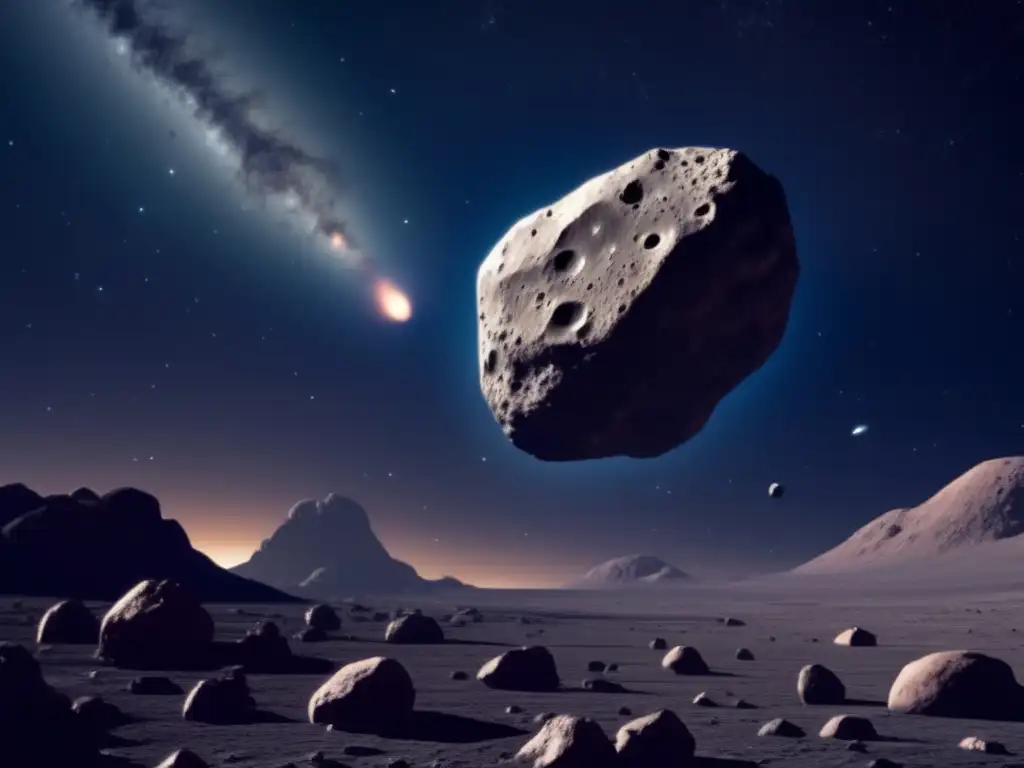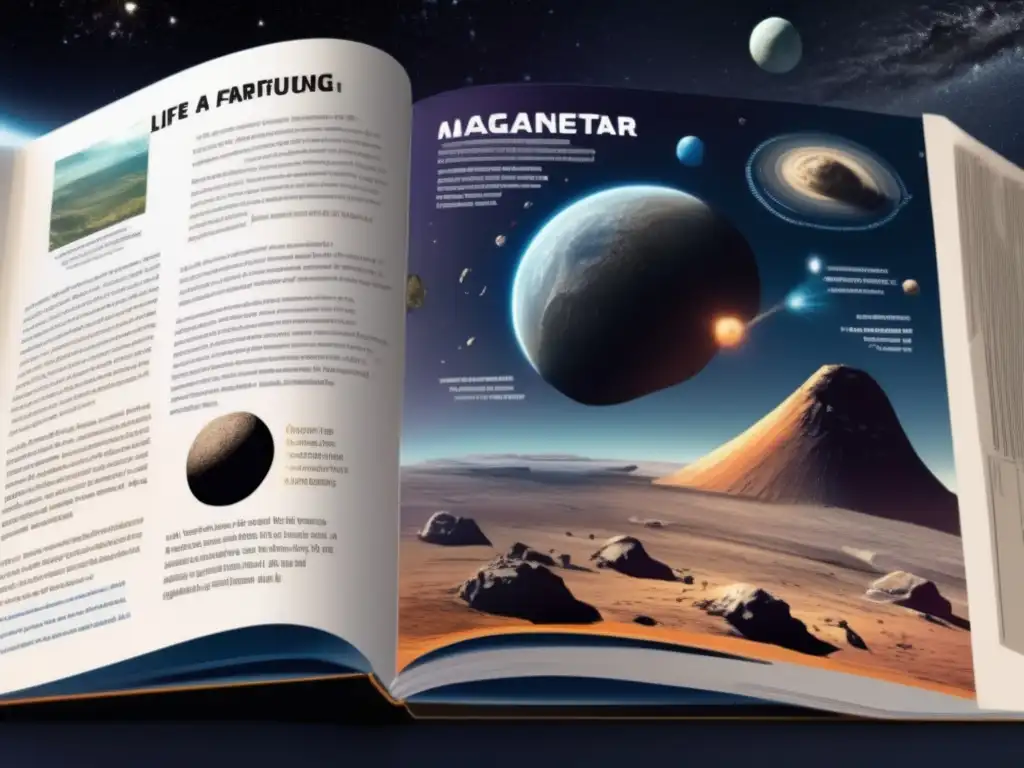Magnetar' Book Review: Life On A Far-Flung Asteroid

Introduction
"Magnetar" is a novel written by James J. Caterino that explores the life and challenges of colonists living on an asteroid. This book is a great example of how the concept of asteroids can be incorporated into works of fiction. In this article, we will delve into the different ways "Magnetar" approaches the topic of asteroids and how it compares to real-life research and scientific knowledge.
The Setting: Life on an Asteroid

Asteroid Colonization: Real-Life Research vs Fictional Depictions
Caterino's "Magnetar" depicts asteroid colonization as a well-functioning society with an established government, economy, and complex systems in place. However, in real life, asteroid colonization remains a challenge for scientists and engineers alike. There are several key obstacles to overcome before human beings can successfully settle on an asteroid. These challenges include limited resources, the lack of gravity, radiation exposure, and distance from Earth. While Caterino's imagination allows for a more advanced society than current technology permits, the book still promotes interest and excitement towards the possibilities of living on an asteroid.
The Importance of Asteroids: A Fictional Take
"Magnetar" also highlights the importance of asteroids beyond their scientific value. The story portrays asteroids as the solution to Earth's overpopulation crisis and rising environmental deterioration. The book's characters believe that the seemingly endless resources found on asteroids can help sustain their small, self-sufficient communities. Even though this notion is unrealistic for now, it raises important discussions about the role asteroids could play in solving some of Earth's most pressing problems.
Scientific Inaccuracies: Separating Fact From Fiction
While "Magnetar" includes several accurate descriptions of life in space, it also has its fair share of scientific inaccuracies. For instance, the book portrays a high-speed asteroid impact as being survivable by covering oneself with dirt or taking cover in underground structures. In reality, an asteroid impact would create an immense amount of force that could generate temperatures of thousands of degrees Celsius and trigger massive earthquakes. Unfortunately, these inaccuracies not only reduce the book's credibility but can also misinform readers about potential dangers and safety measures in space.
The Characters: Humanizing Life on an Asteroid

Caterino uses his characters to explore the emotional toll of living on an asteroid. The isolation and limited resources lead to complex social dynamics that are different from typical Earth settings. In "Magnetar," the characters' relationships reflect how the harsh environment affects their psyche and personal lives; this depicts the importance of emotional and psychological support in challenging environments.
Diversity and Representation in Space Fiction
"Magnetar" also features a diverse cast of characters, including women, people of color, and LGBTQ+ individuals, who play pivotal roles in the story. This is a welcome change in space fiction, where historically, characters have been primarily white and male-dominated. Caterino's writing shows how diversity and representation can create a more interesting and relatable story while adding a sense of realism to space fiction novels.
The Human Condition in Space
Lastly, "Magnetar" portrays human beings as being capable of thriving even in the most extreme conditions. Despite the difficulties, the characters in "Magnetar" show resilience and the ability to adapt to their environment. They demonstrate how human beings can survive and thrive outside of Earth, providing hope and inspiration for future space exploration.
Conclusion
"Magnetar" is a fascinating example of how fictional works can incorporate real-life scientific concepts, such as asteroids, into their stories. While some inaccuracies exist, the author's creative imagination and focus on human relationships and diversity make the book enjoyable and thought-provoking. Caterino's novel shows that space fiction can be an effective avenue for promoting public interest and engagement in space research and exploration. With more space fiction works like "Magnetar," people may be inspired to learn more about asteroids and their potential impact on our future.
Frequently Asked Questions

-
Can human beings live on asteroids?
While asteroid colonization remains a challenge for scientists and engineers, it is theoretically possible. Several key obstacles need to be overcome before humans can successfully settle on an asteroid, including limited resources, lack of gravity, radiation exposure, and distance from Earth.
-
Are there any benefits to living on an asteroid?
Living on an asteroid could potentially solve some of Earth's most pressing problems, such as overpopulation and environmental deterioration. Asteroids hold a vast amount of resources that could sustain small, self-sufficient communities.
-
Can we survive asteroid impacts, as portrayed in "Magnetar"?
No, asteroid impacts can create an immense amount of force that could generate temperatures of thousands of degrees Celsius and trigger massive earthquakes. Taking cover in dirt or underground structures is not enough to survive an asteroid impact.
-
Why is diversity and representation important in space fiction?
Diversity and representation are essential for creating a more interesting and relatable story while adding a sense of realism to space fiction novels. Historically, characters in space fiction have been primarily white and male-dominated, making it harder for people of diverse backgrounds to see themselves represented in the genre.
-
What can space fiction do to help promote space research and exploration?
Space fiction like "Magnetar" can be an effective avenue for promoting public interest and engagement in space research and exploration. Through creative imagination and focus on human relationships, space fiction works can inspire people to learn more about asteroids and their potential impact on our future.
Additional Resources

For those interested in reading more about asteroids in science fiction, we recommend "The Expanse" series by James S. A. Corey and "Rendezvous with Rama" by Arthur C. Clarke.
 Exploring The Asteroid Threat In 'Duck Dodgers'
Exploring The Asteroid Threat In 'Duck Dodgers' Mass Extinction' Film Review: The Portrayal Of Asteroid Disasters
Mass Extinction' Film Review: The Portrayal Of Asteroid Disasters The Asteroid Space Station In 'Wall-E': A Critical Review
The Asteroid Space Station In 'Wall-E': A Critical ReviewIf you want to discover more articles similar to Magnetar' Book Review: Life On A Far-Flung Asteroid, you can visit the Asteroids in Fiction category.
Leave a Reply

Articulos relacionados: